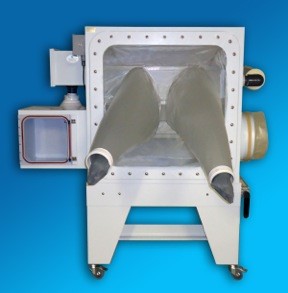The past decade has brought numerous improvements in IVC (individually ventilated cage positive pressure rack systems.) Studies sponsored by leading laboratory animal breeders and top notch research institutes around the world have conducted relatively long term studies and maintained germ-free/ axenic status. I happen to know two of the professionals who conducted the studies and can vouch that they are meticulous, dedicated and amongst the best I have ever met in the business. One is Gil Hecht at the Weizmann Institute in Israel, the other is Randi Lundberg formerly with Taconic.
This leads me to repeat the question that so many people involved in biome and gut flora research have asked, ‘is it necessary to use isolators for long term studies and/ or long term husbandry of stock animals, can we use IVC instead?’ The short answer is yes. An odd comment for the manufacturer of isolators to make! The no answer comes with a few key caveats; does the institute have prior germ-free experience, do we have the requisite and adequate staff (with both aptitude and training) , have we identified the level of risk are our researchers willing to take.
Not every institute has the resources of Weizmann or of a large commercial breeder like Taconic. Researchers are faced with minimal support from their university and are therefore dependent on grants. The end result is underfunded, under staffed germ-free facilities and under trained technicians. That is where the benefit of isolators shine. Although they still require trained staff they are less technique dependent and able to run well in lean funding situations! Many facilities start with just 1 or 2 isolators. A total commitment of less than 50 cages and under twenty thousand dollars in equipment cost. Even at that level there is redundancy so research can continue even if 1 isolator was contaminated.
The one constant even in the face of recent IVC improvements is they are inherently technique dependent. The other is that despite the success that both Weizmann and Taconic have had in Rack systems (IVC) they still maintain large isolator facilities. The reason, one size does not fit all. For some the rack systems are the answer for others traditional isolators work best. A third factor is that isolators are still the highest level of biosecurity available. That is across all manufacturers’ regards of isolator brand. Any isolator is a higher level security than any positive pressure rack system (IVC).
Some manufacturers of isolator offer products that have changed very little since the 1980’s. I supposed you could glean they are tried and true, ‘why fix what isn’t broken’. I deviate from that norm in that customer feedback should drive design and constantly seek to find the better ways to approach the same task. At Park Bioservices we were faced with clients wanting to interface with the Taconic germ-free shipper and or autoclave cylinders. We had long contended that our rectangular ports were easier to use than the old traditional round ports. However round was better for ease of connecting with shippers and cylinder. Our great improvement (at least I thought so) were port adapters. They clamped onto rectangular ports and allowed the germ-free shipper to attach. Problem solved? The answer from clients was a resounding NO! We had to rethink our strategy. This led us to offering isolators with 2 ports, one round the other rectangular, one isolator with the advantage of both ports. This was the optimal solution and by all reports from customers a winner.
Let me end here by saying that of the alternatives available today isolators are the most flexible (no pun intended). They can handle from 4 cages to a 100 plus cages and be configured as needed by the facility/ institution.
Aticles referenced with permission of the authors.
The Randi Lundberg article.
The Gil Hecht Article

